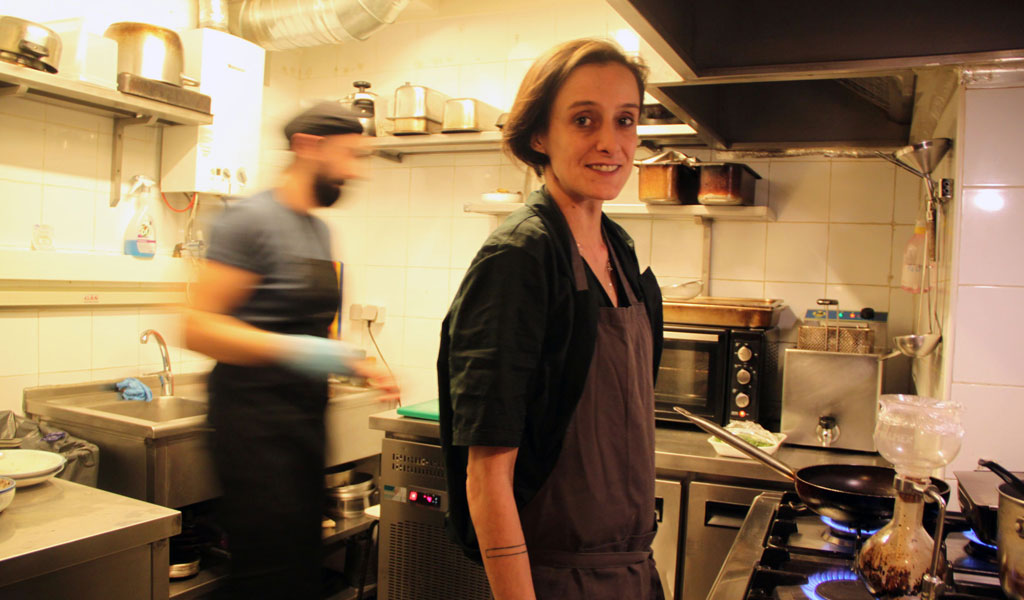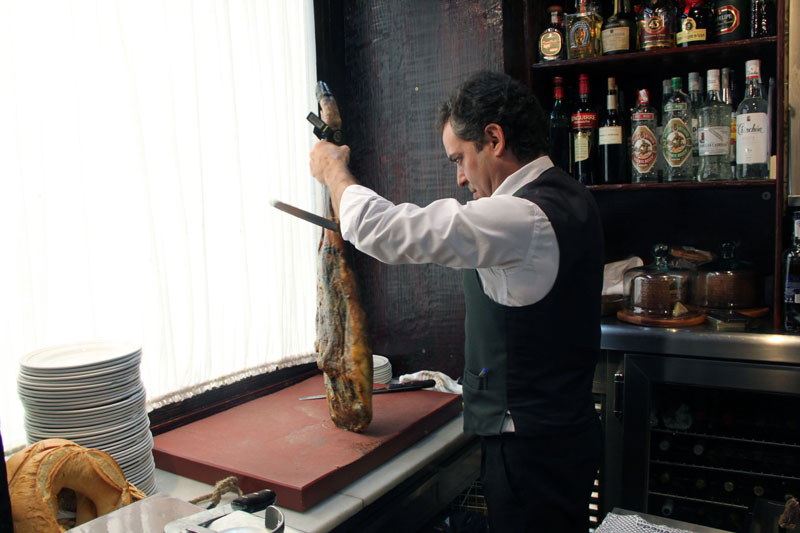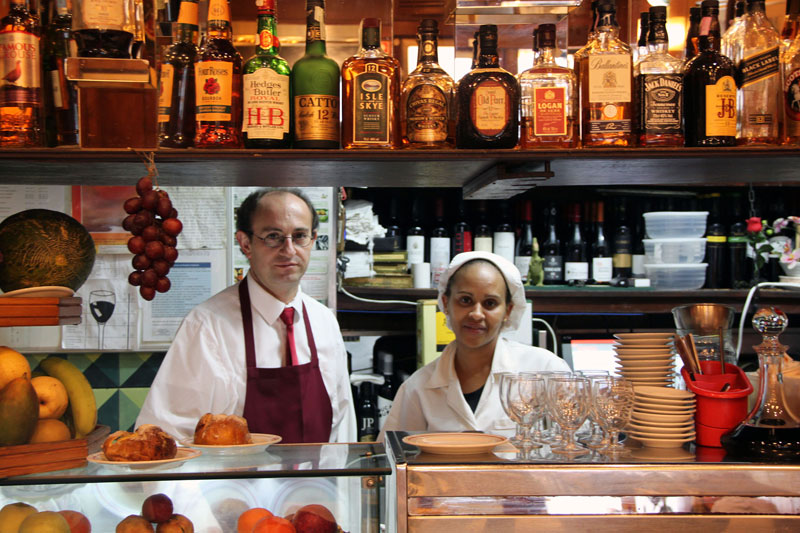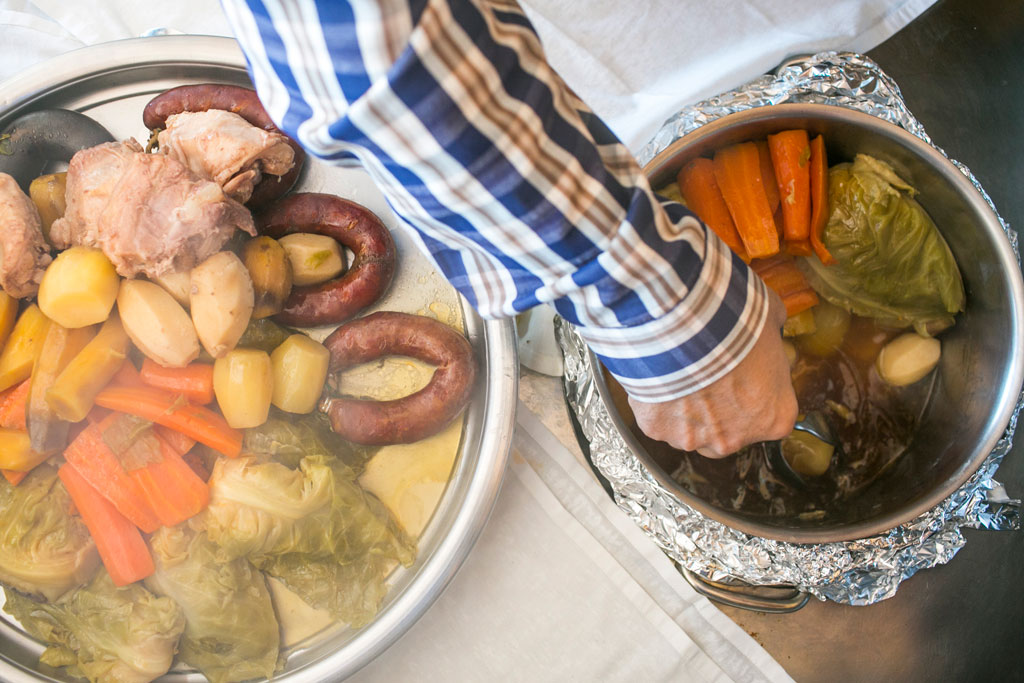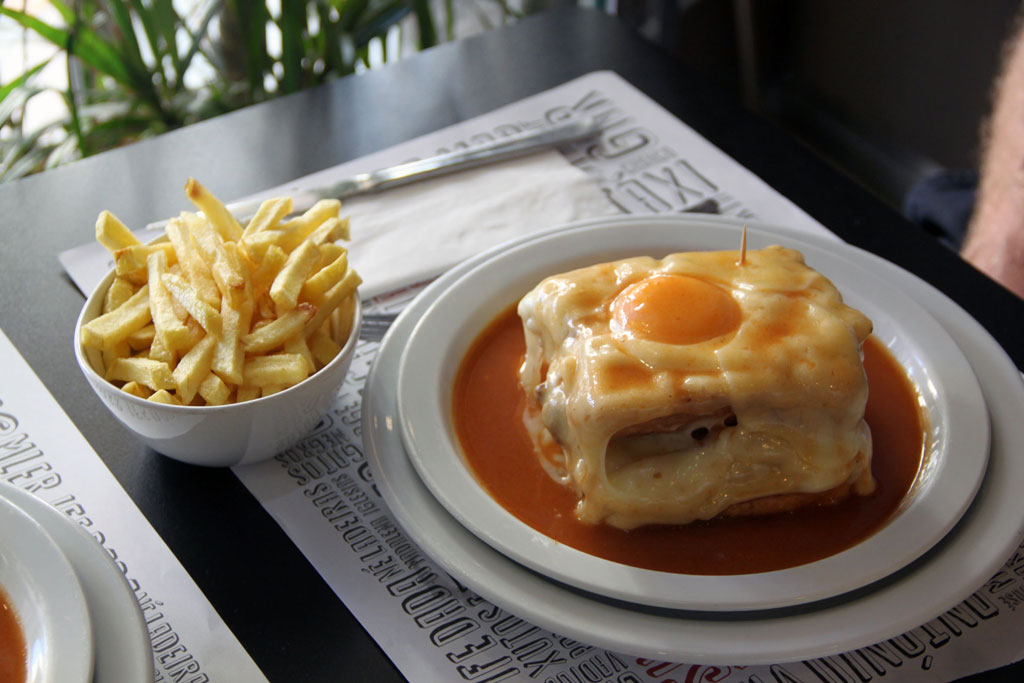We can't find the internet
Attempting to reconnect
Something went wrong!
Hang in there while we get back on track
Search results for "Francesca Savoldi"
Lisbon
Fumeiro de Santa Catarina: Up In Smoke
Though it’s an age-old method for preservation and flavor enhancement all over the world, the smoking of meat, fish, and cheese is not a notable tradition in southern Europe. In Portugal, in the old days, salt curing was more common – particularly for the national staple, cod. However, the presence of smoking traditions in the north, particularly around the Minho river, indicates the possibility that the Vikings’ favorite method for cooking fish may have reached all the way to the northeastern Iberian peninsula.
Read moreElsewhere
Lucio: Urban Treasure
Sitting at a table in Lucio, a long-established tavern in the heart of Madrid’s most famous tapas street, is a singular experience that has a slightly surreal, Buñuel-esque touch. Queues formed of Madrid’s born-and-bred elite snake past the elegant wooden bar, the coiffed connoisseurs greeted with affection by the landlord himself as they wait to eat his restaurant’s specialty dish. Lucio’s signature white suit and the hushed, apparent dignity of the place are quite a contrast to the actual holy grail itself: a plate of fried eggs and fries. The eponymous owner keeps repeating in a whisper that this is the most famous restaurant in all of Spain; perhaps it truly is.
Read moreLisbon
Bagos: All the Rice Moves
In downtown’s Chiado, a slightly bougie-looking restaurant profits from the crowds leaving weekend performances at the São Luiz theatre, a former 19th-century cinema. This place also takes advantage of a common and ubiquitous Portuguese ingredient – rice. Bagos (“grains of rice”) has just a few tables over two floors; the upstairs level is the more suitable for a business lunch partaken while tram 28 trundles by. The vibe is refined but simple, and that is reflected in how the humble staple on its menu is reworked in the kitchen. Chef Henrique Mouro explores the many ways in which different varieties of rice are prepared across the country, revealing a very typical component as the basis for all sorts of invention.
Read moreLisbon
O Churrasco: Diamond in the Touristy Rough
Rua das Portas de Santo Antão is probably the most touristy food street in Lisbon. This pedestrian road is full of restaurants with guys outside hawking their specials and menus offering out-of-season sardines and frozen pizzas. But there’s more to this downtown thoroughfare than just luring American vacationers to overpriced mediocrity. Located on this road, buzzing even before the tourist boom thanks to its central location, musical theaters and local commerce, is one of the city’s timeless classics, O Churrasco. This restaurant looks different from the usual chicken restaurant, with impressionistic paintings hanging from its wooden walls and waiters in bow ties, and has been a camouflaged gem for many years, a particular favorite of middle-class families and theater lovers.
Read moreLisbon
O Churrasco: Diamond in the Touristy Rough
Rua das Portas de Santo Antão is probably the most touristy food street in Lisbon. This pedestrian road is full of restaurants with guys outside hawking their specials and menus offering out-of-season sardines and frozen pizzas. But there’s more to this downtown thoroughfare than just luring American vacationers to overpriced mediocrity. Located on this road, buzzing even before the tourist boom thanks to its central location, musical theaters and local commerce, is one of the city’s timeless classics, O Churrasco. This restaurant looks different from the usual chicken restaurant, with impressionistic paintings hanging from its wooden walls and waiters in bow ties, and has been a camouflaged gem for many years, a particular favorite of middle-class families and theater lovers.
Read moreLisbon
Espaço Açores: Off the Island
Inside the humble municipal market building of an elderly neighborhood between Belém’s touristic spectacles and the sprawling Monsanto park is the oldest Azorean restaurant in the Portuguese capital. In non-descript Ajuda, with a view over Ponte Abril 25, this place transports Lisboetas with tastes of the remote and alluring Atlantic archipelago. When Espaço Açores opened 10 years ago it was one of four restaurants in Lisbon serving the food of the Azores. The others have since closed, a fact that at first seems difficult to understand: food from these islands is incredibly good and more often than not reproduces traditional dishes from the mainland, albeit with considerably better ingredients.
Read morePorto
Francesinha: Porto's Heart-Stopping Sandwich
A gloppy, meaty, cheesy brick served in a pool of sauce and with a mountain of fries: please meet the francesinha, the culinary pride and joy of the city of Porto. Today, restaurant billboards proclaim in many languages that they serve the best version in the world, revealing the genuine power of this artery-clogging combination that, incredibly, was originally conceived as a snack. We have to say it though: eating a francesinha is worth every last calorie. This dense sandwich, which is impossible to eat just with your hands, is often considered the lusophone version of the croque monsieur.
Read more